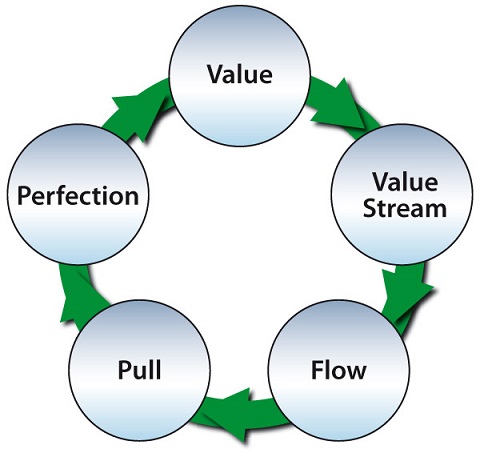There are differing opinions on how many ‘types’ of waste an organisation might have. Current thinking suggests, seven, eight, or even nine depending on the nature of the organisation and the type of work carried out. Originally, there were said to be seven types of waste, and these were largely found in manufacturing organisations. They can be listed as: Overproduction Excess inventory Waiting (lost time) Unnecessary motion Unnecessary transportation (double handling, or moving excess stock) Re-work (poor quality) Over-processing (over-engineered) In each instance, it is recognized that even incremental improvements can help an organisation to increase its efficiency and reduce its costs. These savings and improvements are typically realized in a greater proportion of better quality output, meaning Continue reading
Production Management Techniques
5 Why Analysis – A Root Cause Analysis Tool
5 Why Analysis is a simple approach for exploring root causes and instilling a “Fix the root cause, not the symptom,” culture at all levels of a company. The 5 Why Analysis was originally developed by Toyota founder Sakichi Toyoda and was later used within Toyota Motor Corp. during the development of the Toyota Product System (TPS). At Toyota, 5 Whys is still a critical component of problem-solving training, and the method is still widely applied within the company when problems occur. “Toyota Business Practices dictates using the ‘Five Whys’ to get to the root cause of a problem, not the ‘Five Whos’ to find a fire the guilty party.” – Jeff Liker, The Toyota Way It can be used Continue reading
Kaizen and Kanban in Lean Manufacturing
Kaizen Kaizen is broadly interpreted as the Japanese term for continuous improvement, although it is perhaps more accurately translated as a form of control. It applies to all aspects of organisational output, and can thus be linked to both Toyota Production System (TPS) and types of waste, as well as the means of introducing and managing basic employee working conditions. One of the most popular tools of Kaizen is a Kanban, which of itself translates to differing types of organisational process control, which collectively lead to greater organisational production efficiency. The overarching principle of Kaizen, and Kanban within that, is to create a ‘pull through’ organisational process, as opposed to push through. Historically, for many manufacturing organisations, understandably, Continue reading
Lean Thinking
Concept of Lean Thinking Lean Thinking originated from manufacturing methods used by Japanese automotive manufacturers, especially from Toyota. Lean thinking is basically about getting the right things, to the right place, at the right time, in the right quantity while minimizing waste and waiting time and being flexible and open to change. A term coined by James P. Womack and Daniel T. Jones in their book “Lean Thinking: Banish Waste and Create Wealth in Your Corporation” to describe an exceptionally focused, efficient, agile and successful organisation. Lean thinking provides a way to specify value, sequence value-creating actions in the best way, conduct these activities without interruption whenever someone requests them, and perform them more and more effectively. Lean thinking Continue reading
Line Balancing in Production Management
A production line is typically associated with continuous or flow production system. Production lines are particularly appropriate for high volume operations. In a production line work is divided into individual tasks and assigned to consecutive workstations on the line. In mass production on progressive assembly line the workload between various machines or workstations should be balanced. The need for balancing the line becomes obvious when it is considered that the output to be received from the line is determined by the maximum time involved in the performance of work at one particular workstation. The imbalances existing in the line would lead to wastage of time at all other work stations when one work station holds up the total output rate. Continue reading
Features of an Ideal Plant Layout
Plant layout and design is an important component of a businesses overall operations, both in terms of maximizing the effectiveness of the production process and meeting the needs of employees. Plant layout refers to the arrangement of physical facilities such as machinery, equipment, furniture etc. within the factory building in such a manner so as to have quickest flow of material at the lowest cost and with the least amount of handling in processing the product from the receipt of material to the shipment of the finished product. It may be defined as a technique of locating machines, processes and plant services within the factory so as to achieve the right quantity and quality of output at the lowest possible Continue reading


